by Texas Homesteader ~
It’s not hard to bottle fresh sweet honey from the apiary. But what steps need to be taken from beehive to jar?
There are things to watch for. Things such as moisture content in your honey, capped vs uncapped honeycomb, etc. But now? Finally the time is right. We’re going to take that sweet honey from frame to bottle!
(Note: Some links in this post are for further information from earlier posts I’ve written. But links preceded with * are affiliate links. If you click them and buy something (almost anything, not just the item noted) I could receive a tiny commission. But the price you pay will NOT change. It’s an easy way to support this blog without anything coming out of your pocket. So click often! Thank you!)
Last week we talked about Preparing The Hive for honey harvest. And in my Beginning Beekeeper’s Series we’ve talked about everything from becoming NewBEES, obtaining your bees, caring for them and more.
Links to all of those articles are below, be sure to check them out. But now let’s get down to harvesting that honey!
Moisture Levels For Capped vs Uncapped Honeycomb
After the honey supers are removed from the hives they’re brought into the house. They’re inspected to determine the percentage of capped vs uncapped honey.
Capped honey has a lower moisture content than uncapped honey. In the photo below you can see examples of capped vs uncapped honey cells.
Your harvested honey needs to be no more than 18% moisture. Otherwise your honey stands a chance of fermenting after it’s harvested.
A good rule of thumb is that about 85%-90% of the honey on your frames should be capped.
But it’s always a good idea to test your harvested honey using a *Refractometer. This is an inexpensive little device that measures the moisture for you.
Once you’re comfortable with your expected moisture level based on the visual capped vs uncapped percentages, it’s time to harvest the honey from the frames.
Removing Honey From The Frames
Beekeepers harvest honey in different ways:
-
Using A Honey Extractor
Most beekeepers like to use an uncapping knife to basically cut off the outside of the honeycomb to expose the honey.
When honey is removed this way it keeps the wax comb on the frames. This makes honey-making much easier for the bees next time since they don’t have to start over building the wax comb before filling it with honey. The comb’s already there!
When the honeycomb has had the caps removed, the beekeepers will place the frames of open honeycomb into a *honey extractor.
This device spins the frames and slings the honey from them. The honey will pool at the bottom of the barrel to be filtered.
-
Scraping Honey/Wax From Frames
But for us there are considerations with storing honey supers filled with wax. How to protect it from wax moths? Or mice? Where to store it? How to keep it cool?
Some beekeepers stack their empty hive boxes outside. But being out in the open with no beehive to protect the contents, there could potentially be other critters to mess with it too. So many worries!
Because of that some beekeepers scrape both wax as well as honey off the frames. Then they store the empty frames in the wooden hive box until next year.
Honey & Wax In Uncapping Tub
Whichever method you use, the initial uncapping or scraping is typically done into an *Uncapping Tank.
That’s a special tub 2-part tub setup to hold wax cut from the frames and allow the honey to drip from the wax into the 2nd tub below.
If you’re just uncapping the comb, the frames will then be placed into the honey extractor from there. Then the extractor will sling honey from the comb.
If you’re scraping wax & honey completely from the frames you need to allow time for the honey to drip from the comb that’s been removed from the frames.
Allowing The Honey To Drip Slowly
Whether just uncapping or scraping the frames, the honey should be allowed to drip from the wax for a period of time. This takes very little time for uncapping method since so little wax is actually cut from the comb.
But when completely scraping the frames we allow the honey to drip from the comb for 1-2 days.
When as much honey as possible has dripped away, I’ll clean & Process The Wax for other purposes. But now our attention turns to bottling up our delicious honey.
(Note: When I have extra beeswax I’ll often sell it on my Online Store. Anything purchased from our online store helps support this blog. So thank you!
Filtering The Honey Through A Sieve
The honey that’s contained in the extractor (or in the bottom section of the uncapping tank) is now drained via a spigot.
As the honey flows from the spigot it’s further filtered through a dual fine-mesh *Honey Sieve to remove wax cappings & impurities.
The honey flows through those sieves into a special *5-gallon honey bucket. This bucket also has a spigot on the bottom to make it easy to actually bottle up the honey.
So now that the honey’s been harvested, the wax has been drained and the honey’s been sieve-filtered, all that’s left to do is bottle it up!
Bottling The Honey
I never, EVER put our honey into those cute plastic honey-bear squeezy jars. Real honey will crystallize.
And if your crystallized honey is in a plastic container it’s very difficult to melt those crystals back into that smooth honey you love.
But if it’s in glass it’s EASY to Melt Those Honey Crystals. So my honey is always (ALWAYS) placed in glass jars.
Although there are special jars made for honey bottling, all of our honey is jarred into canning jars instead.
Canning jars just seem to be more useful & reusable. Plus I hate buying a specialty jar that may or may not ever be used again. But canning jars? Everyone loves ’em! So we always bottle honey in glass jars.
Sanitizing Jars
So to bottle our honey we’ll buy new canning jars and then wash & sanitize them. To sanitize the jars they’re placed in an oven that’s been set to 225 degrees Fahrenheit. (according to The Organic Prepper)
We allow them to stay at that temperature for 20 minutes. Then we’ll allow the jars to cool completely before placing any honey into them.
When all is ready we place the 5-gallon bucket of honey onto an elevated surface. We tare a sanitized & cooled jar on a scale and then fill it to the weight indicated on our labels.
Finally we slap on a new, clean canning-jar lid for each jar and it’s done. That’s how we bottle honey!
Honey Harvest: Complete!
~TxH~
Links In This Post
Beginning Beekeeper’s Series
*Refractometer For Measuring Moisture Content
*Honey Extractor
*Uncapping Tank
Purifying Beeswax From The Hive
*Stainless Steel Honey Sieve
*5-Gallon Honey Bucket
Don’t Throw Away That Crystallized Honey!
BEEKEEPING SERIES:
- Preparing For the Hives
- Obtaining Your Bees
- Inspecting Your Hives
- Feeding Bees With A Frame-Feeder
- Knowing When To Expand The Hive
- Performing A Walk-Away Split
- Performing A Frame-Swap Split
- 5-Minute Beehive Stand
- Adding A Honey Super To Your Hive
- Catching A Bee Swarm (With Video)
- Requeening A Beehive – Things We Didn’t Know
- Make FOUR 5-Frame Nuc Boxes From 1 Sheet of Plywood!
- Varroa Mite Treatment For Your Apiary
- Preparing Your Hive For Honey Harvest
- Proper Honey Bottling Tips
- Purifying Your Beeswax
- MYO Beeswax Lip Balm
- Homemade Beeswax Jar Candles
- Beeswax Wraps – A Natural Solution To Plastic Wrap
…And MUCH More!
See All Our Beekeeping Posts
C’mon by & sit a spell! Come hang out at our Facebook Page . It’s like sitting in a front porch rocker with a glass of cold iced tea. There are lots of good folks sharing! And you can also follow along on Pinterest, Twitter or Instagram
If you’d like to receive an email when a new blog post goes live,
subscribe to our Blog!
References:
Honey Moisture Level – https://www.honeybeesonline.com/honey-moisture-level
Oven-Sanitizing Canning Jars – https://www.theorganicprepper.com/canning-101-jar-prep/

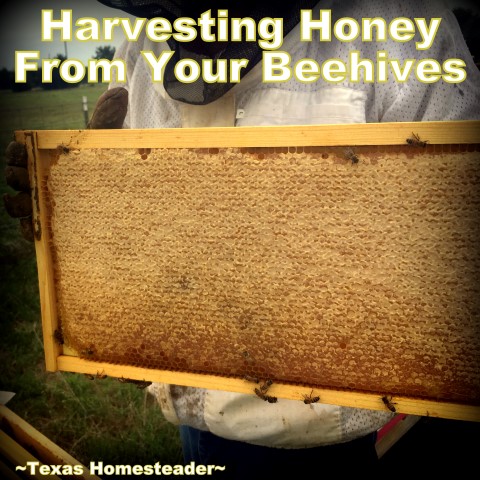
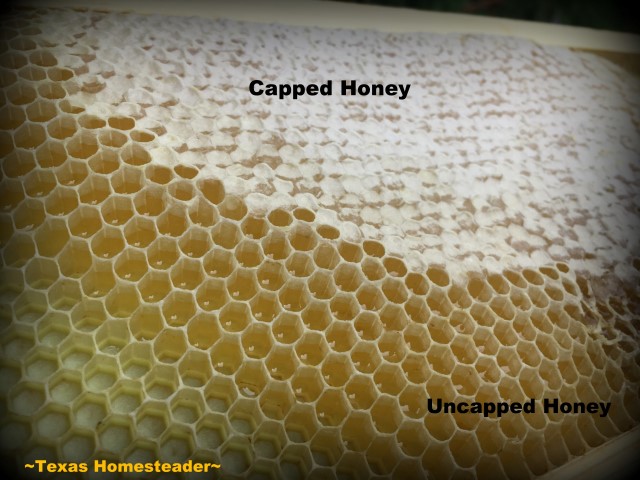
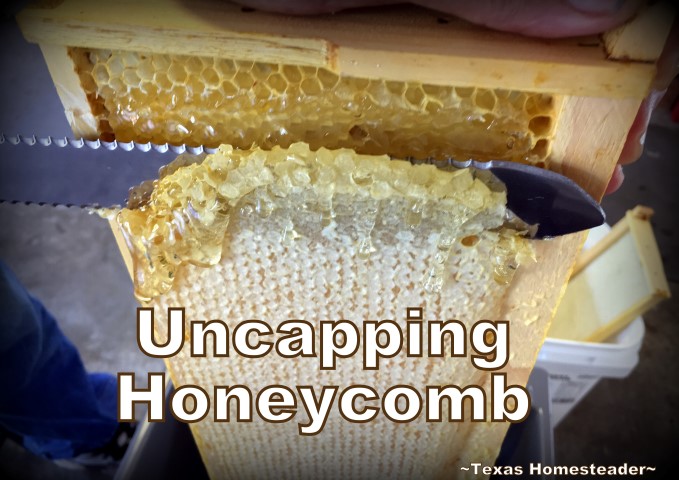

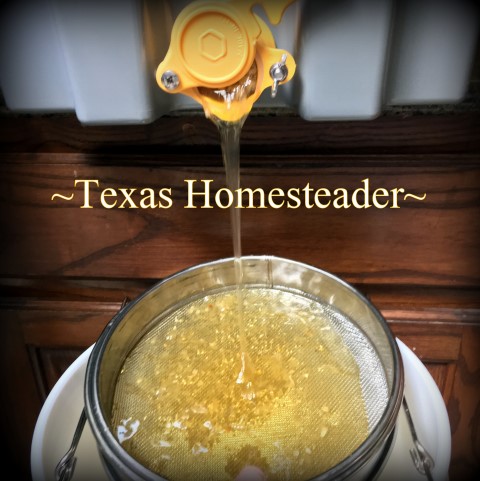
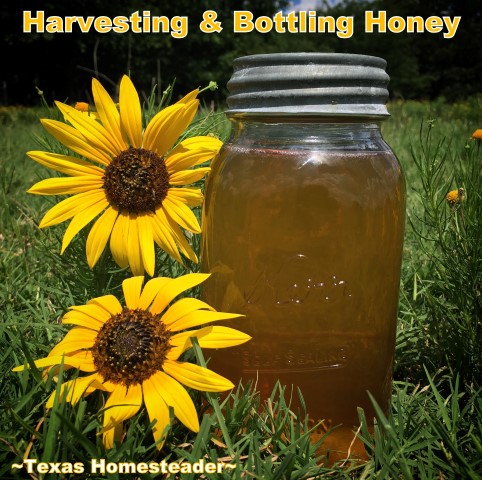
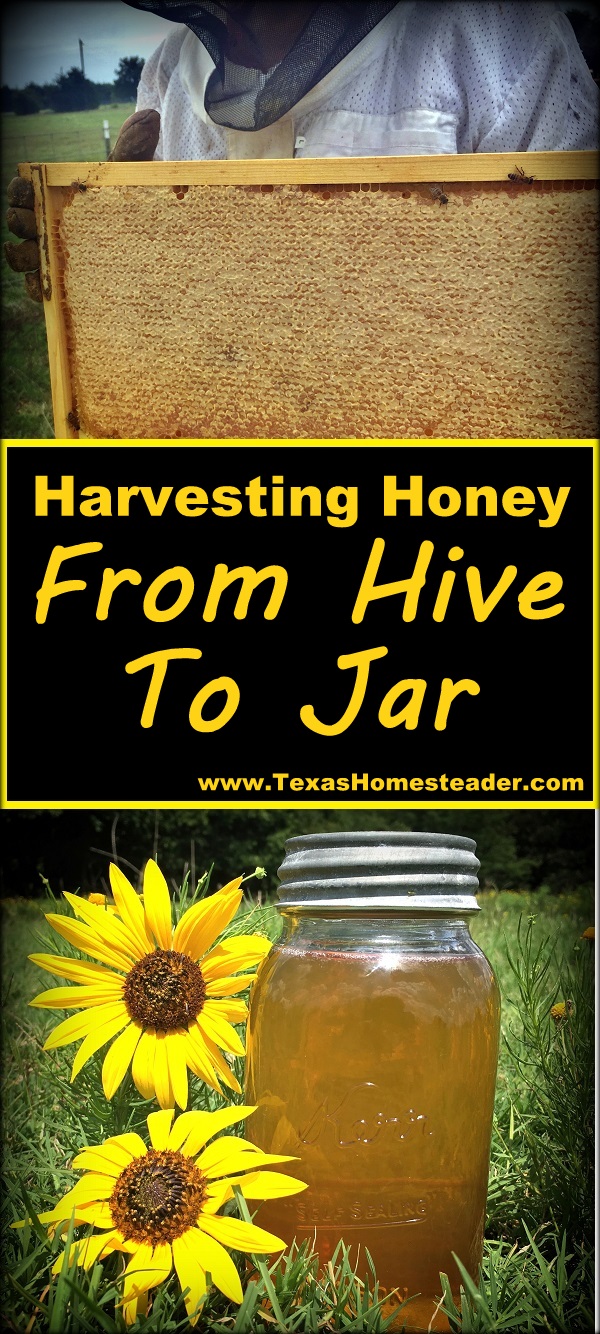

So much great information on this blog, even in the comments! Thank you for sharing
You’re always so uplifting Laurinda. Thank you for the blessings you bring to us ALL when you comment here! XOX ~TxH~
We typically take the capping wax & honey and put it in gallon ziploc bags and store in the freezer. Then during the warmer days of winter when there isn’t much to forage, we put it out in an old pie plate for the bees to clean. Within a day or two, the wax is clean of most honey and ready to be melted and used for other purposes. I should also note we are hobby beekeepers, so getting every last drop isn’t as important to us.
I love your idea of setting it back for the bees during harder forage time Kathleen. Good for you! ~TxH~